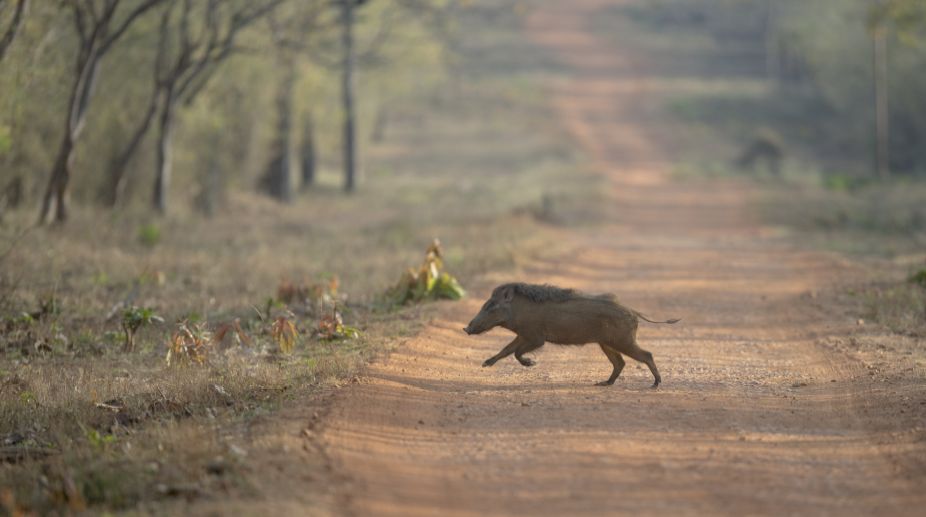Intrusion Detection System will detect elephants approaching railway tracks: Officials
The East Coast of Railway (ECOR) is all set to install Intrusion Detection System (IDS) in elephant movement areas in…

(Photo: Getty Images)
There are lone boars, just as there are lone bulls among elephants and gaur, and this big boar was evidently solitary. He was by no means the largest I have seen, but he was impressive enough, tall and massively built and with formidable tusks — I thought he was probably well over 300 lb. in weight, and quite old.
Leopards give such solitaries a clear berth and even the mighty tiger usually avoids a mix-up with them their courage is beyond question, and their tushes cut through solid bone as if through butter. I once saw a dog killed by a boar and the entire rib cage was cut clean through with a single slash. Lone boars can be dangerous to men too, especially a jungleside cultivation where familiarity has bred contempt but this one was a forest boar shy of man. He was approaching me casually at a slow relaxed pace head down sniffing the ground from time to time.
At a patch of young grass a hundred yards from me he came to a halt and began to nibble at the lush green herbage. I do not have a photograph of a grown wild boar and was very keen on one. But then even when using a long lens the largest of wild boars has to come up within 30 yards of the camera for a really good picture — the texture of the bristies (an old Tamil verse compares them with much poetic truth to the fibrous roots of the bamboo) the alert, small eyes, the curved tusks and the strong snout are all important in porcine power and details will not register satisfactorily at a greater distance. I tested the wind with a handful of dust which fell straight down to the earth and hid behind a tree hoping the boar would come to the open ground near me on which my lens was focused.
Advertisement
After awhile he turned and sauntered away at a tangent only to turn again and approach me slowly. When he was 50 yards away, I felt sorely tempted to take a snapshot, but knowing that I could have only one chance for the picture (he would surely bolt the moment he heard the thud of the shutter), and seeing him headed towards the open ground, I held back.
He went behind a bush and began to root up something which he ate with much gusto. I could now hear the pleased grunts and snuffles of the boar feeding and it occurred to me that this was the time to sneak up to within shooting distance, but there was no adequate cover nearer. Then he came into view again walking towards me out of the bush and a faint breeze sprang up not so much a breeze as a ripple in the air, and he winded me.
He threw up his snout and tail and instantly the bristles on his neck and shoulders and back stood up in a stiff upright hedge highest on the shoulders and hind quarters — I had not realised before how effective an alarm signal the erection of these bristles could be. Without a sound he turned sharply away from me and ran towards a tree, once behind the tree he changed course abruptive again and once again zigzagging farther and farther away till he was out of sight. I sat down and lit a cigarette and reflected on the truth of the old saw “Never resist temptation — it may not come your way again”.
Then I crossed over to where he had been feeding behind the bush and saw that what he had been eating was a white puffball a glistening white species of Lycoperdon almost the size of a tennis ball discolouring with maturity. This kina is edible, and delicious when young and firm, peeled sliced and tossed lightly in sizzling butter though the boar did not know this.
However he had left nothing behind for me, the few puff-balls he had not crunched up were too mature and flabby even for him.
(This was published on 9 September 1966)
Advertisement